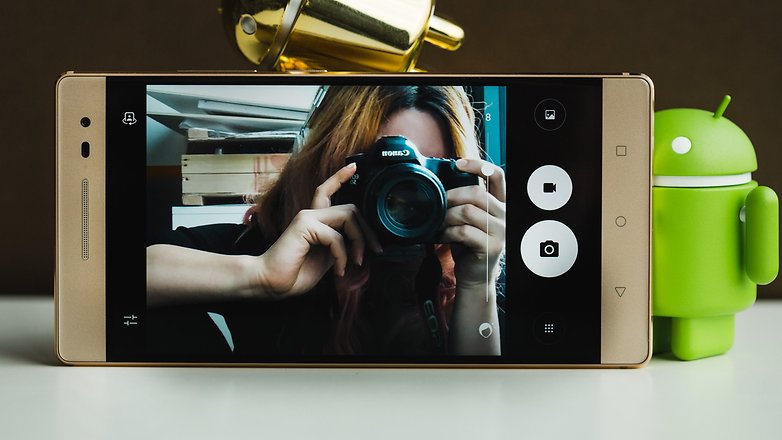Smartphone cameras and DSLR: The battle is over


Wake up and smell the coffee my beloved smartphone manufacturers! Times are changing. Roughly two years ago, the tech industry very excitedly discussed whether smartphone cameras can replace good old digital single-reflex lens (DSLR) cameras. Some people saw the Galaxy S7 as a camera killer. Now, two years later, we can say that no smartphone camera has yet to replace a single-reflex lens camera, but the battle is also becoming completely irrelevant.
What happened to smartphone photography? As recently as the iPhone 7’s release, there has been portrait mode with background blurriness, recreated from the bokeh effect of a full-format camera with an open aperture. However, the digital effect is normally unconvincing, and the “not completely garbage” seal of quality is as good as it gets.
Camera tests show that today’s smartphone cameras actually take quite excellent pictures. On the other hand, this is representative of enthusiasts putting in some effort: gorgeous photos can be achieved using manual mode.
But a smartphone photo is mostly about taking quick snapshots, and tinkering around with the settings for a long time is mostly counterproductive. Manual mode is reminiscent of the approach with a DSLR: The right settings produce a perfectly illuminated image that optimally captures all the details, ideally in RAW format.

Inspecting the RAW images reveals how smartphone cameras perform intensive post-processing on sensor data. Anyone who imports the RAW files from some smartphones into Lightroom knows what I’m talking about: Oftentimes, it’s almost impossible to find a color setting that is balanced throughout the entire image; there is no lens correction. Smartphone’s RAW is useful for a subject’s details, but are not useful for the entire composition.
Computational Photography: Now that’s really something!
The most prominent example of computational photography is the Google Pixel. Google uses HDR+ here, which adds up several underexposed images into one. This single image never really existed; rather, it is the software that produces the result that ends up in the gallery. Incidentally, the Galaxy S8 also acts in a similar fashion.
Some smartphones with a dual camera use related tricks: One sensor provides the photo, while the other delivers additional information on details or lighting conditions.

Naturally, the results are not fully unanimous, as the latest evaluation in our camera test shows. However, it is precisely in low light that we can see how much clever post-processing of sensor data can affect things. Future smartphones, which also have image recognition and additional gimmicks, will increasingly emphasize post-processing.
Camera smartphones are not making a comeback
There are many reasons why this trend will continue. The physical possibilities of a smartphone’s optical system are limited, and large sensors on conventional smartphones are inconceivable. As such, camera software will become the mainstay of future developments in smartphone photography.
And what about special phones like a Lumia 1020 or Samsung Galaxy K Zoom? Design costs soar, and beautiful photos are not a surefire way to success either. It requires additional software tuning. Lately, however, the pricing has not been right: buyers need to shell out significantly more money for the negligible added value. Who does that?
The best opportunity for zoom lenses in smartphones are recent modular concepts such as the Moto Z/Moto Z2 Force. But after the somewhat unsuccessful approach with the camera mod, we don't hear much buzz about modular cameras in future releases.

The DSLR complements the smartphone
Back to the DSLR camera. Anyone who wants true control over their images has little choice but to obtain a standalone camera, and this will increasingly become the case with the coming smartphone generations.
A study by Creative Strategies came to the stunning conclusion that DSLR owners even take pictures with their smartphone more often than users without a DSLR camera. Why, you ask? On the one hand there are photos that are used as reminders, such as a store’s business hours or a phone number. And smartphones are great for creating quick snapshots that are easily shared on Facebook and similar social networks.
So, smartphones and DSLR cameras have long found a reason to co-exist. People who like to take pictures will always have a use for both, and indeed, can see both camera forms as complementary.
What do you think? Is your smartphone camera good enough or do you find the camera app to be basically bloatware?














I can vouch for my Fuji s9000w. I have the ability to take a macro shot from 60 ft at Crystal clarity.
I own two DSLRs (Canon 7D and 7D MkII) I also own a Samsung NX series along with my smartphone. No smartphone can compare to a big chink of glass and an APS-C sensor. You can get good pictures with a smartphone, but it is not even close.
THANK YOU! It just strips my gears when I see an article on any tech site, how so & so's smartphone, takes photos that are "just as good as a dSLR".
Just the SIZE of a pinhole smartphone sensor...it's anywhere from 6-10 times SMALLER than even an APS-C consumer grade, not to mention a full frame dSLR sensor.
As for the megapixel debate, anyone that knows anything about digital photography, knows that most of the good from "more megapixels", is for zoom/cropping. Case in point, that 40 megapixel Nokia phone a few years back. One of the better windows phones/cameras. Commercial showed a couple ladies at some sort of music concert, at the back of the venue, taking a photo of the stage, then, cropping it and sending it to their friends and it looks like the photo was taken from the front of the venue, not the back.
A good camera, w
With an 8megapixel sensor can faithfully reproduce an A3 (11x17) photo. Who prints stuff that large? Certainly not 99.9% of the people who own smartphones, that's for sure.
Smartphones, have, and will continue to replace the compact camera, or in general terms, point & shoot types.
If you really want photos from smartphones to improve, drop the "colorful, sexy, slim, stylish" nonsense, let the phones "bulk up". Put a REAL retractable 5-10x zoom lens on them, and stop with this nonsense of 2,3 or more camera sensors.
Sorry about being long winded....photography is a hobby, and a passion.
flickr.com/photos/p51d007/albums
Focal length. Any situation requiring focal length and the smartphone is totally incapable. Compact point and shoots struggle here as well.
DSLR and smartphone images and videos generally serve very different purposes for personal, social and commercial use. (A lot of enthusiast photographers during the DSLR "boom" of the mid 00s trying for professional quality results - often disappointed, also found out that "casually" lugging all that heavy and expensive kit along can turn a happy outing into a photo shoot, like it or not, and can irritate family and friends rather enhance an occasion. The DSLR hobby boom ended five or so years ago.)
The real competition is between smartphones and compact cameras, which for the same price are still superior in image or video output, egonomics and battery life but are being left behind for the all-in-one functionality of phones - the best camera being the one you always have with you. I recently experimented with only my phone out for a few hours shooting instead of the usual Canon compact, and (along with badly missing the EVF) found battery life inadequate and an external charger too clumsy to use with the camera - the only fix would be a spare swappable battery.
Smartphone images are also shared and even commercially used in a completely different "ecosystem" from pro or prosumer cameras - online fun shares are normally poor quality but capture unposed moments in a pleasing way, and a lot of restaurants, hotels or other destinations would just as soon show a happy messy table full of grinning visitors instead of a carefully composed hi-res advertising images of facilities or plated food. My daughter, who shoots commercially, was losing local business advertising to smiley Facebook and Instagram displays, I can't say they're wrong for their purposes, although some of that business is coming back now.
Photos taken with smartphones have reached a very high level of image quality, and this can be seen very well if we look back a few years ago: the evolution of photo quality has an upward trend. And in the coming years, the quality of cameras will be equal to DSLRs. In this dispute, mirrorless cameras are becoming more and more appealing due to the quality of photography and reduced size and weight. So, we can talk about smarthone vs. mirrorless.
Shoot with DSLR onto micro SD (w/adapter), transfer SD to phone to post-process and upload to cloud.
I use the camera in my phone mostly for documentation of things or when I have happen to left my DSLR at home. A smart phone can never replace the DLSR.
Same here. I use the smartphone, for work related stuff, document broken, problem machines I work on.